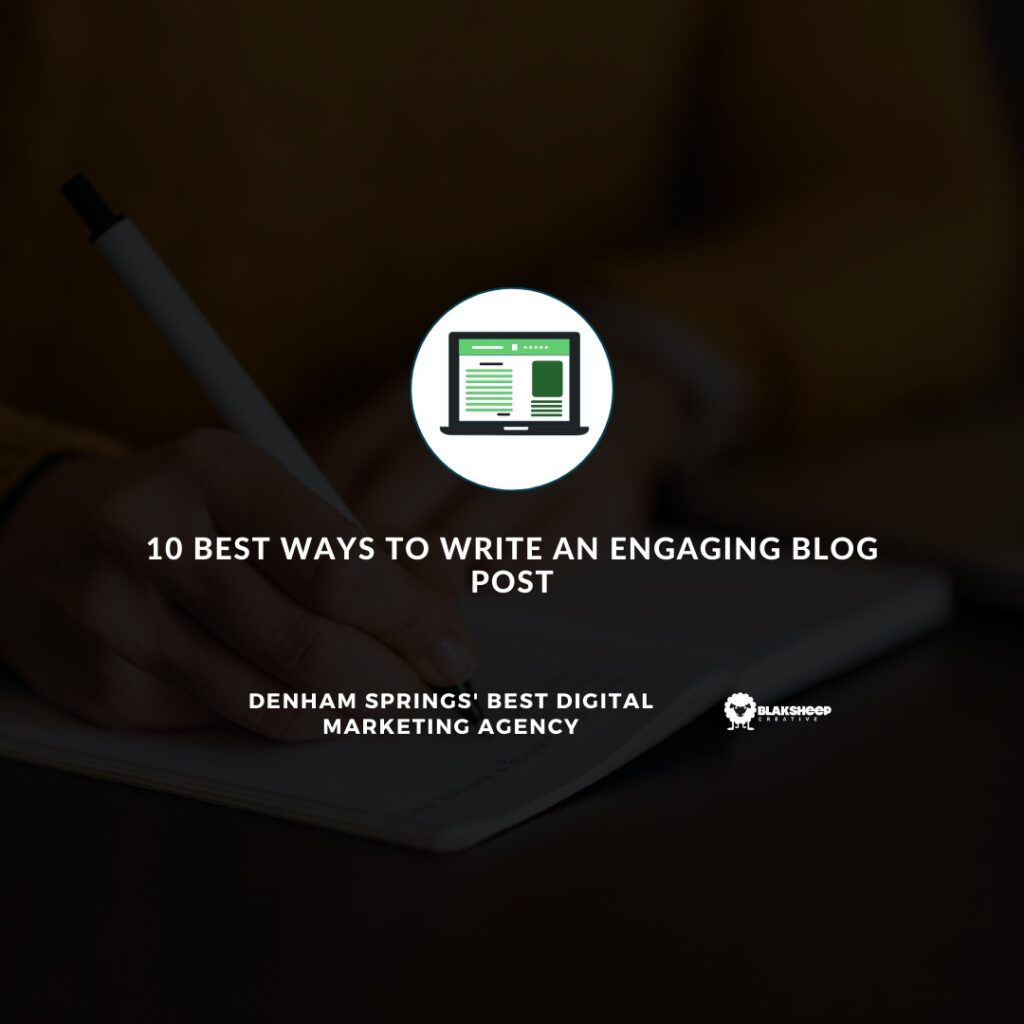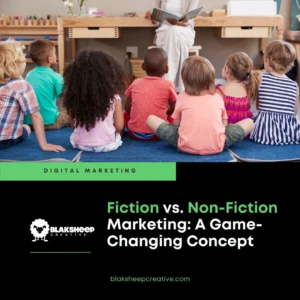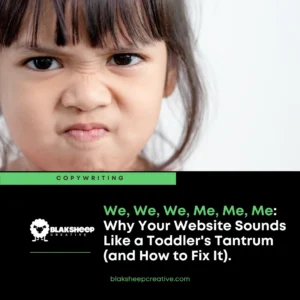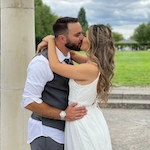I’m going to show you ten different ways to write engaging blog posts. It doesn’t matter your subject; these tips will help you get a reader’s attention and keep them reading until the end.
Start with an attention-grabbing headline.
Your headline is the first thing that people will see, so it’s essential to make sure that it grabs your audience’s attention. If your headline doesn’t intrigue them, they won’t bother reading the rest of your post.
Writing headlines is an art that takes practice and patience to perfect, but if you follow these tips, you can get it right on your first try.
How to write an attention-grabbing headline:
- Use numbers or headlines that promise a solution to a problem.
- Start your headline with a question.
- Use strong adjectives and powerful verbs.
- Make your headline specific to your audience.
Examples of attention-grabbing headlines:
- “How to Write an Attention-Grabbing Headline in 5 Minutes”
- “9 Signs You Should Fire a Web Development/SEO Client“
- “3 Simple Tips to Writing Engaging Blog Posts”
- “7 Reasons Why Your Podcast Needs a Website“
- “After the Storm: 16 Social Media Tips for Small Business Owners“
- “The Power of Social Media: How It Influences Customers“
Vague headlines are boring; write compelling headlines to draw readers in!
You can even use a tool, like SEOpressors’ Headline Analyzer, to get started
Related Reading: What Is Google Site Quality and How Does Google Rate Your Site?
Write a catchy introduction paragraph.
The introduction paragraph is a great place to grab the reader’s attention by immediately introducing your main argument or thesis. Make sure that you prove your point in this section and entice people into reading the rest of the post.
How to write an engaging introduction paragraph:
Make it short. Your goal with this paragraph is not to tell the whole story; it’s to make your reader want to read more.
Start with a hook statement. This is usually one sentence that offers an intriguing fact, quote, or statistic related to your argument.
Introduce by telling a personal story or sharing an anecdote about you or someone else that includes some element of surprise. It should introduce your central claim, but it shouldn’t identify what that claim is. The reader will expect to be surprised by the end of the story, which keeps them engaged.
Introduce your argument with a series of questions that need answers.
Give an anecdote related to your field of expertise that sets up a problem and provides a solution.
Example of an engaging introduction:
“Are you struggling to write an engaging blog post? Writing can sometimes become challenging, but it doesn’t have to be. There are many simple ways that you can improve your writing and keep readers engaged.”
Include some interesting statistics
Statistics provide the reader with information that they might not know about your topic or industry. It’s crucial to ensure that you use trustworthy sources for this information because people are less likely to trust your argument if the statistics are false or biased.
Using interesting statistics will not only help you gain your reader’s trust but will help increase your E-A-T score with Google.
Related Reading: How to Demonstrate E-A-T: Tactics to Implement (And Avoid), for Greater Search Visibility
How to include interesting statistics:
- Use statistics that haven’t been used before.
- Make sure that the statistics are from a credible source.
- Include a short explanation of what the statistic means.
- Link to your source to increase your trustworthiness.
- Make sure that the numbers support your thesis, but don’t distract from it.
Example:
“Did you know that Social media has a 100% higher lead-to-close rate than outbound marketing?” – Source Optinmonster.com
Use strong visuals
A visually appealing blog post can help keep people engaged. Even if your writing skills are up to par, people will lose interest if your post is boring to look at.
Related Reading: How to Build a Visually Appealing Website That Converts Like Crazy
How to use visuals in your blog posts:
- Include images, infographics, graphs, and videos relevant to your argument. They also help in your SEO efforts by getting backlinks.
- Make sure that the visuals are easy to read and understand.
- Include a caption or short description for each image.
- If you are using graphs or charts, explain them in detail.
- Make sure that your featured image illustrates the point of your post or is related to it.
Example:
“According to HubSpot, Content with relevant images gets 94% more views than content without. Not only do visuals help keep people engaged, but they can also help illustrate your points and make them more memorable.”
Use powerful quotes
Quotes are a great way to add authority to your argument and make it more persuasive. They also help break up the text and add variety to your blog post.
How to use powerful quotes:
- Include quotes from experts in your industry.
- Make sure that the quote is relevant to your argument.
- Include a short description of who said the quote and when they said it.
- Don’t overuse quotes; use about 1-2 per 1000 words.
Example:
“Writing can sometimes become challenging, but it doesn’t have to be. There are many simple ways that you can improve your writing and keep readers engaged.”
– Brad Batesole, author of “Writing With Lightning.”
Use an exciting conclusion.
Make sure that your blog post has a strong conclusion that pulls everything together instead of just summarizing your points or creating more questions for the reader.
How to write an engaging conclusion:
- Include an extraordinary claim or question.
- Use the information from your introduction, argument, and conclusion to give the reader a call to action.
- Create actionable steps for the reader to apply what you’ve written about in their own lives.
Example:
“So, what are the best ways to write an engaging blog post? It all comes down to understanding your audience, being creative, and using the right techniques. If you can do that, then you’re well on your way to creating content that people will love.”
Write in an informal tone.
People are more likely to read and engage with blog posts written in an informal tone. This doesn’t mean that you should use slang or write like you’re texting a friend. It simply means that you should write as if you’re talking to the reader, using language they will understand.
How to write in an informal tone:
- Use short sentences and paragraphs.
- Make your writing conversational by using “you” instead of “one.”
- Use contractions to make the text sound more natural and friendly.
Above all, use your own unique writing voice. You want to put your voice into your reader’s minds and give them the feeling that they are in your presence.
Example:
“What’s up, guys? There are a few simple tricks that you can use to engage your audience and keep them hooked from one paragraph to the next. In this article, I’m going to share with you my top 10 tips for writing engaging blog posts.”
Write for your audience.
When you’re writing a blog post, it’s essential to think about your ideal reader and what they want to read.
This doesn’t mean that you should write solely for your audience and ignore your own thoughts and opinions. Instead, it means that you should take your audience into account when you’re writing and make sure that your content is relevant to them.
Related Reading: Digital Marketing – An Investment NOT An Expense
How to write for your audience:
- Understand what your audience wants to read about.
- Make sure that your content is relevant to their interests.
- Address the reader directly by using “you.”
- Include questions throughout the article to encourage engagement.
Example:
“Do you want to know how to write an engaging blog post? It all starts with understanding your audience and creating content that they will love. So, what are you waiting for? Start writing!”

Use lists to break up text and keep people reading.
Like visuals, bullet points are a great way to break up text and keep people engaged. They’re also a great way to introduce new ideas and make your content memorable.
How to use lists in your blog post:
- Include a list of facts or statistics at the beginning of your article.
- Use lists to highlight key points throughout your article.
- Create a list of takeaways or action items at the end of your article.
- Include a list of resources for further reading.
Example:
Here are three takeaways from this article:
- Use lists to break up text and keep people engaged.
- Write for your audience.
- Understand what your audience wants to read about.
- Use action words in your sentences.
It’s essential to keep readers engaged from one sentence to the next. One way to do this is by using action words (power words) in your blog content. These words are energetic, making them an excellent choice for blog posts.
Did you know that Medium is an excellent way to grow your brand? Learn how and why you shouldn’t sleep on Medium in our recent blog post.
How to use action words in your blog post:
- Use vivid language that reflects what you want the reader to do or feel.
- Liven up your text with verbs such as “see,” “hear,” “feel,” and “smell.”
- Include adjectives that reflect movement, such as “jumping,” “crawling,” and “flying.”
Example:
“So, what are the best ways to write an engaging blog post? It all comes down to understanding your audience, being creative, and using the right techniques. Want to learn more? Then keep reading.”

Add a call-to-action at the end of each post.
A call-to-action (CTA) is a great way to get readers to take the next step in their journey with you. This could be anything from visiting your website to subscribing to your email list.
Learn more about the importance of (and how to craft the perfect CTA).
How to add a CTA to your blog post:
- Include a sentence or two that tells the reader what you want them to do next.
- Include a link to a landing page or your website.
- Include an image that encourages the reader to take the next step.
Example:
“So, now you know how to write an engaging blog post. But what’s the next step? Well, I recommend that you visit my website and explore my blog. Here’s the link: [insert link here].”
Here’s a general layout that you can use for your blog posts.
Use keywords and phrases that search engines love.
A great blog post is useless if your audience can’t find it.
Many bloggers overlook on-page SEO and focus only on social media. But, if you want your blog post to rank high in search engine results pages, you’ll need to spend some time optimizing it for searchability.
How to optimize your blog post:
- Perform keyword research – the best keywords are both relevant to your blog post and match the search intent of your readers.
- Use keywords in your post title tag.
- Use keywords in your URL.
- Include at least one complete sentence that uses the keyword or phrase you want to rank for.
- Link to your “money” pages (e.g., your homepage, product pages, etc.) from within your blog post.
Related Reading: How to Optimize Your Content and Business Listing for Voice Search (2021)
How to use keywords and phrases in content:
- Include the topic of the article in the first sentence of each paragraph.
- Include common keywords that people use when searching for information about your topic on search engines.
- Include relevant long-tail keywords throughout your blog post.
Example:
“So, how do you write an engaging blog post? It all comes down to understanding your audience and creating content that they will love. But don’t forget to add some keywords and phrases that search engines love. This will help your content rank higher in the search results pages.”
Write for your target audience.
One of the best ways to write an engaging blog post is by writing for your target audience. This means understanding who they are, what they want to read about, and what type of language they respond to.
How to write for your target audience:
- Understand their demographics, including their age, gender, and location.
- Understand their interests, including what topics they like to read about.
- Understand their pain point, including the things that cause them stress or frustration.
Before you write the very first blog post:
Many people don’t know how to write an engaging blog post. And that’s a shame because there are so many benefits to blogging as a business owner or entrepreneur.
Before you start writing the first blog post, it’s essential to research what your target audience wants from their content.
Unfortunately, this is the step that most bloggers overlook. Before you put paper to pin, you must know :
- Your audience
- What they want
- What you have to offer
The better you understand them, the easier it will be for you to create content they’ll love.
- What do they want?
- How much time should they spend reading each article?
- Should every article have a call to action at the end?
- What type of language do they respond best to?
Related Reading: Use Your Words – Writing Awesome Web Content
Format your blog post for easy reading
As seen in the example above, it’s important to format your blog post for easy reading. If you want people to read it and share it, you should format your text so that readers can easily get through the article.
People don’t read online; they scan. Make sure that your paragraph structure and font choices make it easy for your readers to do just that.
How to format content for easy reading:
- Use short paragraphs with 1-2 sentences each.
- Use subheadings to break up your text.
- Include an image or two with captions.
- Use a font that is easy to read.
- Ensure that the image and text complement each other.
Example:
“So, you want to know how to write an engaging blog post?
Well, I’m glad you asked. First things first, let’s make sure that your content is ready for the big leagues. This means that your text needs to be easy on the eyes. Here’s how:”
Make sure that all of your links are working correctly.
We see it all the time – broken links. Don’t be one of those bloggers! For your readers, nothing is worse than clicking on a link only to find that it’s not working correctly (or at all).
How to check links before publishing:
This one is easy. Just click on them.
If you get a “page not found” error, then it means that the link is broken.
If the broken link is to a page on your website:
Replace the link with the correct URL or remove it.
If the broken link is to an external website:
Remove the link from your blog post or find another source.

Proofread your work
Oh, how embarrassing! Don’t let this happen to you. Be sure to proofread your work before publishing it, and check the grammar and spelling of each sentence throughout the article.
A good blog post can be ruined if the content is littered with spelling and grammatical errors.
How to proofread content:
- Read the blog post aloud.
- Print out the blog post and read it.
- Use a tool like Grammarly to check the grammar and spelling.
Create how-to posts
How-to guides are a gold mine for engaging blog posts.
Why?
Because people love learning how to do things, plus, when you provide clear and concise instructions, your readers will be able to follow them without any trouble.
How to write a how-to post:
- Start by outlining the steps that are required to complete the task.
- Include images or videos to help illustrate the steps.
- Make sure that your instructions are clear and easy to follow.
- Include a call-to-action at the end of the post.
Example:
16 Steps to Write an Engaging Blog Posts
- Understand your audience
- Research what your target audience wants from their content
- Format your blog post for easy reading
- Proofread your work
- Create how-to posts and provide clear and concise instructions
- Write an attention-grabbing headline and subheadings
- Write your blog post using language that is easy to read
- Include an image or two with captions
- Use a font that is easy to read
- Ensure that the image and text complement each other
- Keep your blog posts short and simple, but don’t focus on word count.
- Have a strong call to action at the end of your post
- Format your blog post for easy reading
- Make sure that all of your links are working correctly
- Proofread your work.”
Now go craft a good blog post!
Now that you’ve completed all ten steps, you should have an excellent idea of how to write an engaging blog post.
You’ll be able to pull in more readers and drive them through your marketing funnel by knowing what they want and need from the beginning. This will help you get better results with less time invested – which is always a plus!
If we missed any helpful tips or tricks for writing compelling content, let us know below in the comments section.
Our team is happy to answer any questions about our services like SEO consulting or website design to help your business thrive online. Our professional copywriters can even write your posts for you.
View our services page to learn how we can help you dominate online!
Thanks for reading! If you liked this post, please share it on social media or comment below with what you thought about using these tips to write an engaging blog post.
Frequently Asked Questions
Here are some frequently asked questions that our team often hears:
Q: How do I write an engaging blog post?
A: To write an engaging blog post, start by understanding your audience and what they want from their content. Format your blog post for easy reading, proofread your work, and create how-to posts with clear and concise instructions. Use images or videos to illustrate the steps and ensure that the text and image complement each other. Have a solid call to action at the end of your post.
Q: What makes a blog post engaging?
A: There is no one answer to this question, as what engages one person may not engage another. However, some things that might make a blog post more engaging include using compelling images or videos, writing clearly and concisely, and providing examples to back up your points.
Q: What do I write in a blog post?
A: Whatever you want! The main goal of a blog post is to get readers interested in what you have to say. You can do this by using engaging language, providing examples, and including photos or video if it relates to your topic.
Q: What is the best way to write a blog post?
A: Again, there is no one answer to this question. However, following the tips in this blog post should help you write content that engages your readers and gets them interested in what you have to say.
Q: What do you write in your first blog post?
A: A good first blog post should introduce yourself and your blog to your readers and provide a little bit of information about what they can expect from you in the future. You might also want to include some of your favorite posts so that readers can get a better idea of the type of content you publish.
Q: What should a blog post look like?
A: A blog post can look however you want it to, as long as the content is engaging and easy to read. Some people write in a more casual tone, while others prefer a more formal style. It all depends on what you think will appeal to your audience.
Q: What is the best length for a blog post?
A: Again, there is no one answer to this question. However, it is generally recommended that blog posts be around 1,000 words long to provide enough information for readers.
But don’t get caught up in word count. Instead, focus on writing content that is engaging and provides value to your readers. If a shorter post is what’s needed, go for it!
Q: What keywords should I use in my blog post?
A: When choosing keywords to include in your blog post, think about what terms people might use in Google search for information related to your topic. However, don’t keyword-stuff your post to rank higher in search engine results. Instead, focus on including keywords naturally throughout your content.
Q: What do I do if I’m stuck on what to write about?
A: If you’re struggling to develop ideas for blog posts, try browsing other blogs in your niche or industry to get inspired. You can also use tools like Google Trends or BuzzSumo to find popular topics that people are discussing online. Finally, don’t be afraid to ask your readers for ideas!
Q: How do I find my writing style?
A: The best way to find your writing style is to write. When you feel that you have something to say, go ahead and start typing. Don’t worry about how it looks or if it’s perfect.
Once you’ve written a few blog posts, look back over them and see what you notice. Do you prefer to use lots of personal anecdotes? Or are you more comfortable sticking to the facts?
Whatever it is, embrace it! It’s what will help you connect with your readers.
Q: What is the best way to promote my blog posts?
A: Once you’ve written a great blog post, the next step is to promote it! You can share your post on social networks, submit it to article directories, or use tools like HARO to get it mentioned in other publications. By promoting your content in various ways, you can increase the chances that people will see it and be interested in what you have to say.
Q: I’m still having trouble coming up with a topic for my blog post. Do you have any suggestions?
A: Yes! You can consider writing about current trends in your industry or even writing about completing familiar tasks. If you’re still stuck, our team is happy to brainstorm ideas with you.
Q: What should I do if I’m having trouble coming up with a solid call to action?
A: You can consider using a call-to-action that asks your reader to subscribe to your blog or follow you on social media. You can also request that they leave a comment with their thoughts on the blog post. Whatever you do, be sure to make it clear and easy for your readers to take the desired action.
Q: I’m having trouble formatting my blog post correctly. Can you help?
A: Yes! Our team can help you format your blog post correctly so that it is ready to publish. If you’re still having issues after the formatting process, we’d be happy to help with that as well. Our team has a lot of experience working with blog posts – just let us know!
Q: I want my blog post to rank higher on Google. How can I achieve this goal?
A: Our team can help you with various digital marketing services, like SEO consulting, that can help improve your blog’s rank on Google. We also offer website design and development services that can help make your website more user-friendly and Google-friendly. Let us know how we can help!
Q: I’m not sure if my blog post is ready to publish. What should I do?
A: Our team can help you proofread and edit your blog post so that it is ready for publication. We can also help you format it correctly and ensure all links are working correctly. If you’re still not sure if your blog post is ready, our team can provide feedback and suggestions to help you improve it. Feel free to contact us anytime!
If you’re still not sure if your blog post is ready, our team can provide feedback and suggestions to help you improve it. Feel free to contact us anytime!
